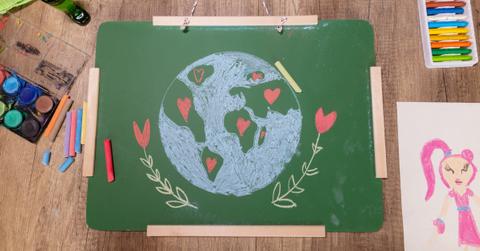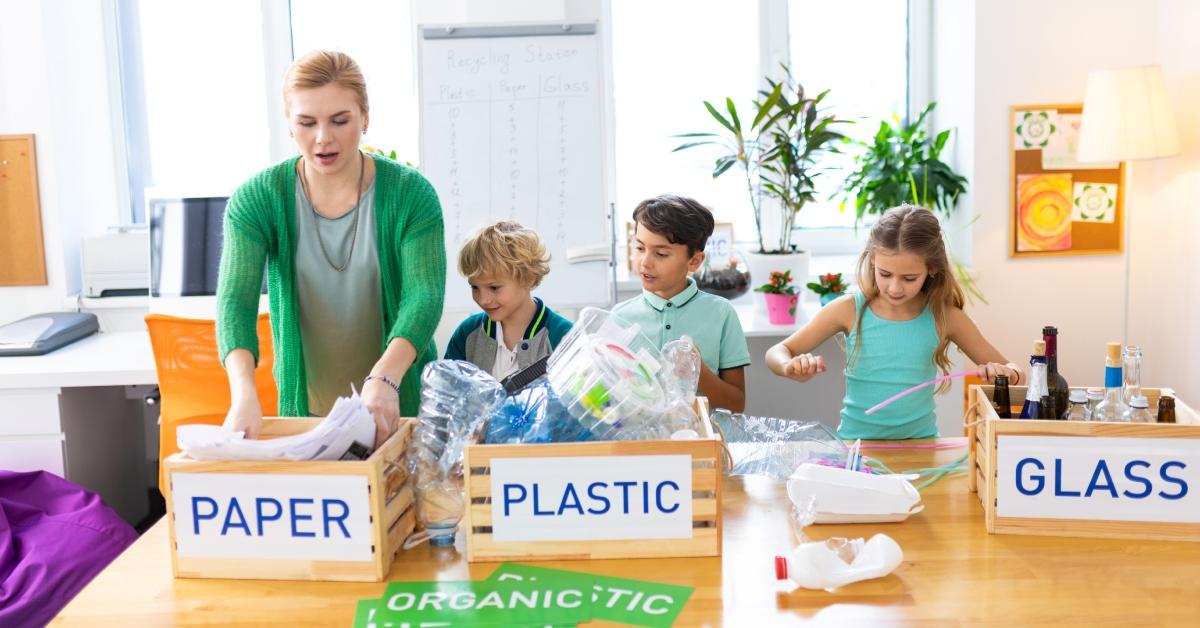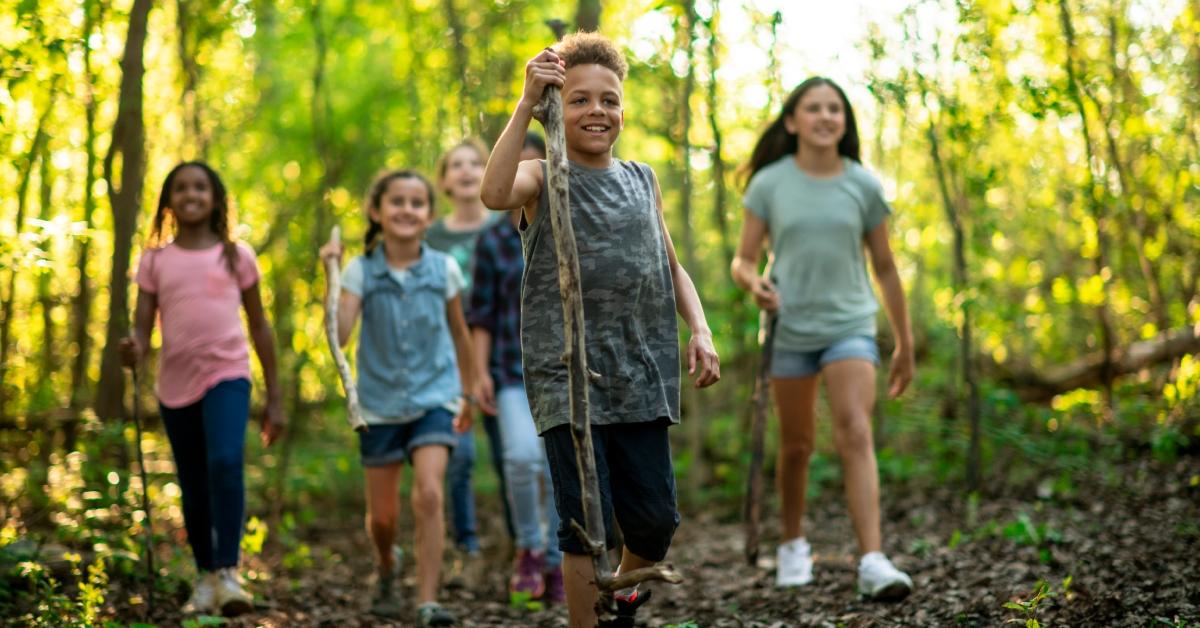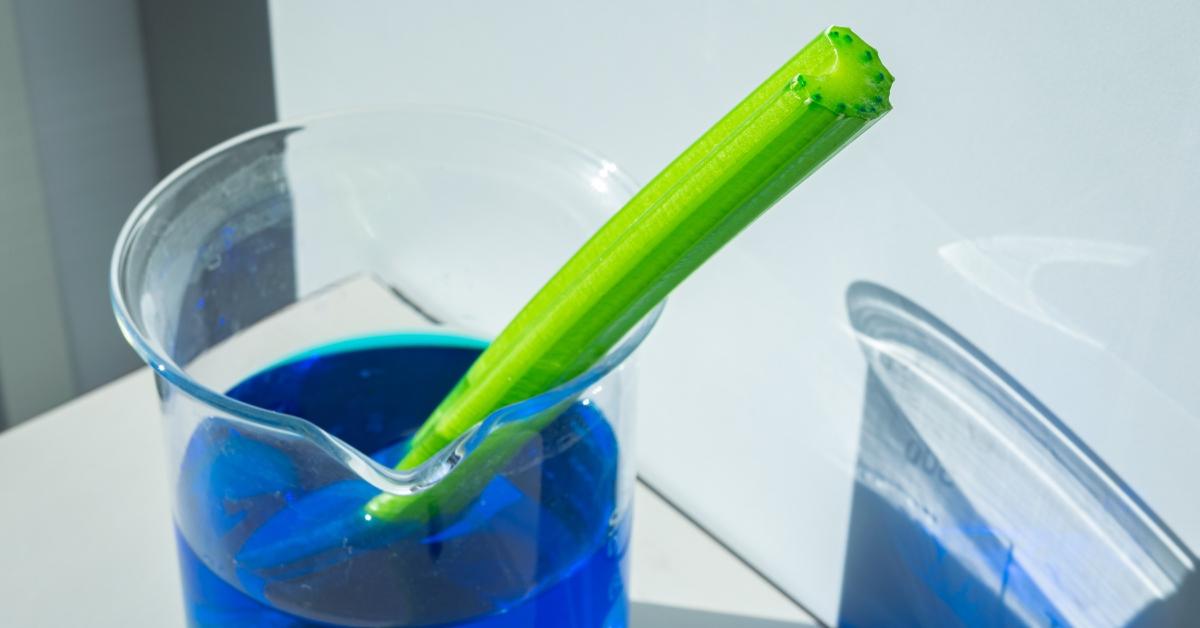Kindergarten Earth Day Activities to Spark Some Environmental Appreciation
Make Earth Day a celebration in the classroom!
Published April 18 2024, 4:26 p.m. ET

These Earth Day crafts and activities are perfect for any kindergarten classroom, and also a great way to distill some environmental knowledge in the minds of the youngest generation. In an age when the effects of climate change are becoming more apparent each day, teaching kids to appreciate and respect the planet is essential for building towards a more sustainable future.
And what better way to do this than to make April 22 a celebration in the classroom? These creative Earth Day activities will keep kindergarteners busy, and even maybe teach them something about recycling, activism, and nature.

Try these Earth Day activities for kindergarteners.
If you are a kindergarten teacher, babysitter, or parent looking for ideas to keep kids engaged and learning on Earth Day, look no further. According to Connections Academy, teaching students about Earth Day can make them feel empowered, give them the knowledge and resources to ask questions, and maybe even inspire them to become an environmental leader in the future.
So, whether you are trying to put something together at the last minute, or just looking for something that will keep your kids busy, these ideas range from step-by-step art projects to informative Earth Day videos. With these activities, April 22 can be something the students look forward to.
Coffee filter Earth
This craft, from the blog iHeartCraftyThings, involves gathering a bunch of coffee filters, as well as some blue and green markers. From here, tell your kids to flatten out the coffee filter so that they can easily draw on the surface. Then, ask them to draw water and land on their Earth.
If you want to take this craft a couple steps further, grab a black sheet of paper and use white colored pencil, or paint, or even stickers to add stars, and glue the Earth on top. If you have time, you can add a writing prompt to the project, asking your kids "What can you do to help the Earth?" and attaching that to the finished product.
Alphabet pickup

Mrs. Jones' Creation Station suggests this alphabet pickup activity, which will teach your kindergarteners the importance of picking up trash, while also helping them practice their alphabet. She recommends printing off each letter of the alphabet on its own sheet of paper — but we recommend using paper scraps from your recycling bin, and just writing out each letter on it, to save paper.
Then, crumple up each piece of paper and scatter them around the classroom. Next, ask your kids to go around the room and pick up as many papers as they can, reading the letter out loud as the pick it up. If you have toy trash pickers for your kiddos, that's a bonus.
Can you sort the recycling?

This game, from the blog A Pinch of Kinder, involves gathering recyclable items and teaching your kids to categorize them as if they were recycling them. Label different containers for paper, plastic, glass, and metal, and place all of the recyclable items in front of your kids. Work through each item one by one to put them in the right container. Before starting this activity, it might be helpful to watch a video on recycling, such as this one made for kids.
Nature scavenger hunt

What better way to teach kids about the planet than going outside? Depending on the weather, a nature scavenger hunt could be a great activity for Earth Day. For this activity, Teach Starter recommends your kids carry a scavenger hunt printable, like this one, and ask them to check off what they see while you are outside,
Pollution experiment

This simple science experiment, from the blog Kindergarten Worksheets and Games, is meant to teach kids the difference between polluted and non-polluted water. What you will need are two celery stalks, two jars, food coloring, and water. First, fill both jars with tap water, but add the food coloring to just one of them. It's recommended to use darker food coloring colors (besides green), so it shows up on the celery.
Now, show both the jars to your students. Explain that one jar represents clean water, the type that is safe to drink and good for the planet, and the other is polluted water, which is unsafe to drink and bad for the planet. Then, put a celery stalk in each jar, allowing it to sit until you start to see the celery to change color. Talk with your kids about what is happening to the celery in the polluted water, how polluted water affects the planet.